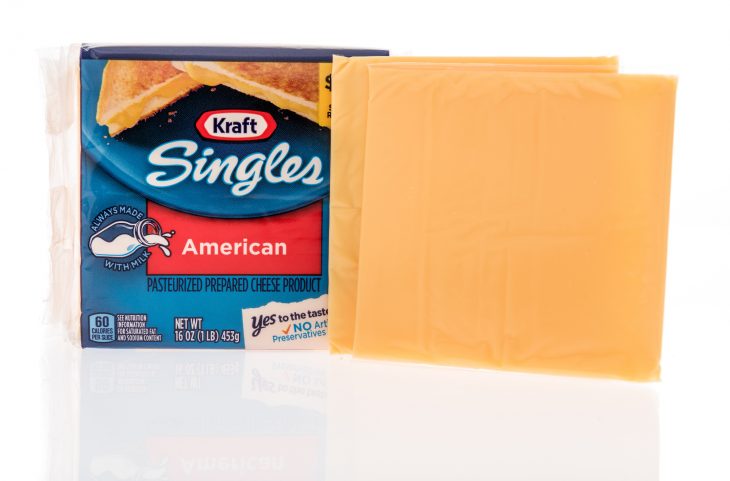
When you think of American cheese, what comes to mind? That classic yellow block that has graced lunch boxes and picnic baskets alike. It’s a staple ingredient in grilled cheese sandwiches across North America, providing an irresistibly creamy texture and uniquely delicious flavor for generations. But have you ever wondered about the nutrition facts behind this timeless treat? Ready to take your knowledge to the next level as we uncover the flavorful secrets found within iconic sliced American Cheese? Let’s get going!
What is American Cheese?
Before we delve into the nutrition facts, let’s first understand what American cheese is. Often sold in individually wrapped slices, American cheese is a type of processed cheese. It was originally crafted by Swiss-born American cheese-maker J.L. Kraft, the founder of Kraft Foods, in the early 20th century.

Caloric Content
A single slice of American cheese, which weighs around 20 grams, contains approximately 60 calories. These calories come from a combination of fats, proteins, and carbohydrates.
Fat Content
A slice of American cheese contains around 4 grams of fat, which includes 2.5 grams of saturated fat. While fat is an essential part of our diet, saturated fats should be limited, as they can raise the levels of bad cholesterol (LDL) in the blood and increase the risk of heart disease.
Protein Source
Despite its reputation, American cheese is a source of protein. One slice provides about 3.5 grams of protein. This essential macronutrient helps in muscle building and tissue repair.
Sodium Levels
American cheese is high in sodium, with a single slice containing around 330 milligrams. The American Heart Association recommends limiting sodium intake to 2,300 milligrams a day, with an ideal limit of no more than 1,500 milligrams per day for most adults. High sodium intake can lead to increased blood pressure and risk of heart disease.
Presence of Calcium
American cheese is a good source of calcium. Each slice provides around 10-20% of the recommended daily intake of calcium, a mineral crucial for healthy bones and teeth.

Vitamin A
American cheese is a decent source of Vitamin A, which plays a vital role in maintaining healthy vision, skin, and immune system. One slice can provide about 2-4% of the daily recommended intake.
Contains Added Preservatives
The downside of American cheese lies in the presence of additives and preservatives. These are used to extend shelf life, maintain consistency, and enhance color. One such additive is sodium phosphate, which ensures the cheese melts smoothly without becoming greasy.
Lactose Content
American cheese typically contains less lactose compared to other cheeses, thanks to the cheese-making process. This might make it a more suitable choice for individuals with lactose intolerance.
The ‘Real Cheese’ Controversy
There’s a longstanding debate about whether American cheese can be considered ‘real cheese.’ While it starts with real cheese (usually referring to types of cheese such as cheddar, or Colbye), the cheese undergoes processing, during which emulsifiers, salts, and other ingredients are added. Therefore, American cheese is categorized as a ‘cheese product.’
Final Word
American cheese has long been an iconic food in the United States. Not only does it add a creamy and delicious flavor to whatever sandwich its in, but it also packs a punch of nutrition that you may not expect. We hope this article has shown discoveries about American cheese that definitely make it a must for lunch boxes and picnic baskets around the country.
And if you’re feeling inspired by all the cheesy goodness, why not go ahead and create your own combination? With so many great variations and flavors to choose from, you can mix and match until your heart is content. If you need some recipe inspiration, don’t forget to check out our types of sandwiches article for more ideas! Until next time, happy snacking!
Was this page helpful?
Our commitment to delivering trustworthy and engaging content is at the heart of what we do. Each fact on our site is contributed by real users like you, bringing a wealth of diverse insights and information. To ensure the highest standards of accuracy and reliability, our dedicated editors meticulously review each submission. This process guarantees that the facts we share are not only fascinating but also credible. Trust in our commitment to quality and authenticity as you explore and learn with us.
